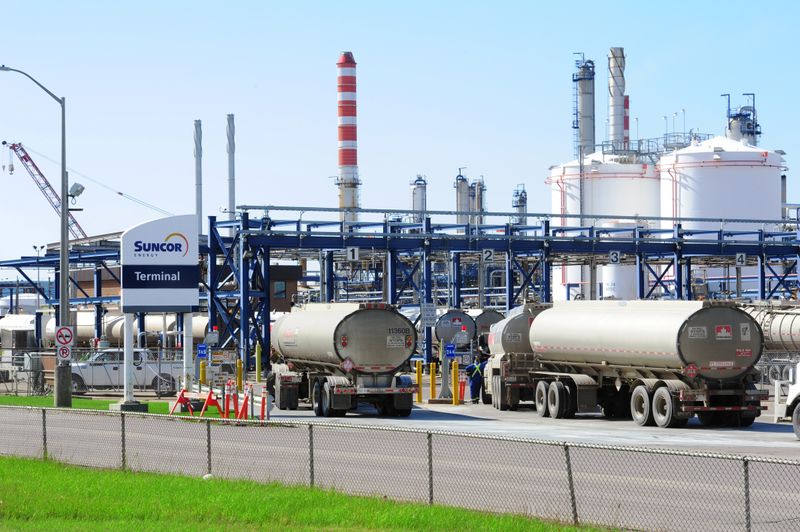By Nia Williams (NYSE:WMB)
CALGARY, Alberta (Reuters) - Canada published the draft Clean Fuel Standard this month, which is central to the ruling Liberal Party's commitment to cut greenhouse gas emissions 30% below 2005 levels by 2030. The proposed regulation is also a key part of Prime Minister Justin Trudeau's pledge that Canada will hit net-zero emissions by 2050.
WHAT WILL IT DO?
The Clean Fuel Standard (CFS) requires suppliers of liquid fuels, such as gasoline, diesel and kerosene, to gradually cut the amount of carbon in their product.
There will be carbon-intensity reduction targets set for each fuel, starting in 2022 and increasing annually until 2030. Carbon intensity is measured on a full lifecycle basis, from crude oil extraction, to refining, to a fuel's end use by consumers.
The CFS is intended to cut carbon emissions, spur investment in clean-energy technology and create a credit trading scheme, where fuel suppliers that are not meeting carbon-intensity reduction requirements can buy credits generated by other companies producing cleaner fuel.
The federal government says the CFS will cut annual emissions by more than 20 megatons by 2030, which would be around 10% of the reductions needed to meet Canada's climate commitments. Canada currently produces around 730 megatons of greenhouse gas emissions annually and has pledged to cut that to 511 megatons by 2030. It is the tenth largest greenhouse gas emitter globally.
WHO HAS TO COMPLY?
A fuel supplier is any company that produces or imports liquid fuels in Canada. That includes integrated oil companies like Suncor Energy and Imperial Oil that produce and refine crude, and refiners like Irving Oil.
HOW CAN CARBON-INTENSITY OF FUEL BE CUT?
There are numerous options available. For example, companies could blend biofuels into their product, cut emissions associated with oil production, improve the energy efficiency of refineries, and invest in carbon capture and storage (CCS) technologies. They could also invest in low-carbon energy sources like hydrogen or renewables.
If they fail to meet carbon-reduction obligations suppliers can purchase credits in the CFS market. Credits are expected to start out relatively cheap and become more expensive as carbon-intensity reduction targets get tougher.
Companies providing alternatives to petroleum-based fuels, such as renewable energy or hydrogen, or those involved in charging electric vehicles, will generate CFS credits.
WHAT WILL IT COST?
Canada estimates the CFS will cut greenhouse gas emissions by 221 megatonnes between 2021 and 2040, at a net cost of C$94 per tonne. In total, there will be a net cost to society of C$20.6 billion.
A government analysis said poorer families will be hit hardest as fuel suppliers pass on their increased costs.
The government originally planned to regulate gaseous and solid fuels as well but narrowed its scope to just liquids. The Canadian Association of Petroleum Producers welcomed that move, but refiners have previously warned the CFS risks increasing their costs.
WHEN DOES IT START?
The draft regulation is in a 75-day comment period and if adopted next year will come into force at the end of 2022.
HOW DOES CANADA'S PLAN COMPARE GLOBALLY?
California, British Columbia and the European Union all have clean fuel regulations. Canada's CFS goes further in that it applies to any type of liquid fuels, not just those used in transportation.
